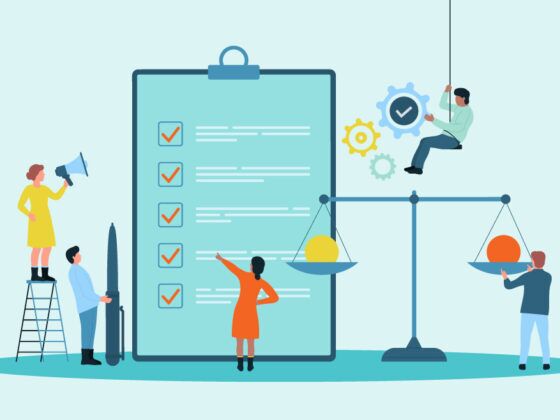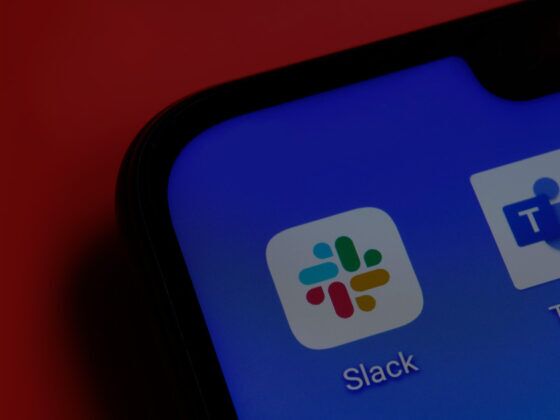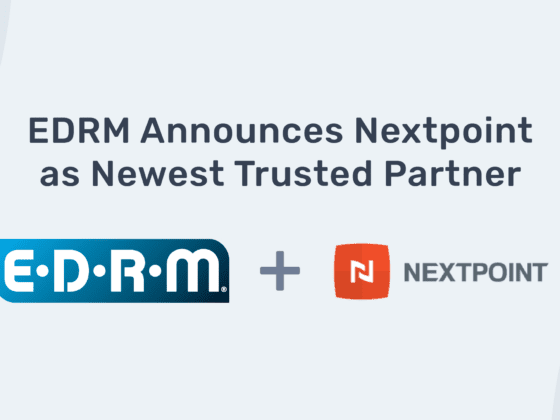EXPERT WITNESS: Chief Judge James Holderman
Nextpoint’s Expert Witness is a feature offering insights from lawyers, technologists, law enforcement, entrepreneurs, and other interesting people influencing our industry and world. Check back regularly for thought-provoking expert opinions.
Chief Judge James Holderman has been a United States district judge in Chicago since 1985 and became chief judge of the U.S. District Court for the Northern District of Illinois in 2006. His time on the bench has coincided with the explosion of electronic evidence in litigation and the adoption of the amendments to the Federal Rules of Civil Procedure addressing eDiscovery. These changes have had a profound affect on litigation, and Holderman, along with Magistrate Judge Nan Nolan and others in the Seventh Circuit, decided to take an active and aggressive approach to tackling these challenges.
Beginning in May of 2009, Holderman helped convene an eDiscovery Committee to take action against the rising burden and cost of discovery. The result was the Seventh Circuit eDiscovery Pilot Program. Taking their cues from, among other sources, the Sedona Conference Cooperation Proclamation, the Seventh Circuit Electronic Discovery Committee is attempting to fix some of the most intractable discovery problems in litigation.
Most importantly, the program has produced a set of principles that provide guidance for streamlining the discovery process. The principles have been successful at reducing discovery battles, and include some novel ideas like eDiscovery liaisons, or individuals appointed to meet and confer about discovery issues with opposing counsel. Judge Holderman recently took some time to share his thoughts on the pilot program, eDiscovery, and the future of litigation.
Nextpoint: When did you first become aware that electronic evidence was a problem for litigation? What was the wake up call that inspired the Pilot Program?
Chief Judge James Holderman:
When I began speaking to business groups and lawyer groups during the early years of my term as the chief federal district judge in Chicago, I was told time after time about the cost and burden of electronic discovery and asked to try to do something about it.
Even after the 2006 amendments to the Federal Rules of Civil Procedure took effect, these concerns continued to be voiced.
So, in May 2009, I, along with now-retired U.S. Magistrate Judge Nan Nolan, invited the best and brightest lawyers and experts in the field of electronic discovery from all areas of the legal profession to a meeting at the Chicago federal courthouse. We wanted to develop a format that judges and lawyers could implement in litigation to minimize the cost and maximize the efficiency of eDiscovery.
From that first meeting, the Seventh Circuit Electronic Discovery Pilot Program Committee was created. Subcommittees were formed and the effort to draft the “Pilot Program Phase One Principles” began. By October 2009, the Committee adopted the eleven Principles that are the central focus of the program to this day.
How important was it to get the judiciary involved in this effort? Is it fair to say that active and engaged judges are the key to solving eDiscovery disputes?
JH:
I have believed for years that it is very important for judges, who typically are insulated from many pretrial issues that come up in the course of litigation, to become as aware and knowledgeable as possible about the potential problems stemming from electronic discovery.
But I have also believed it is equally important that lawyers be just as knowledgeable and committed to cutting pretrial litigation costs and increasing the efficiency of the pretrial discovery process. Applying 20th Century pretrial litigation procedures to the 21st Century problems is not the best way to provide justice. As technology enhances the way people and businesses send, receive, analyze, and maintain information, we judges and lawyers must also enhance the way we deliver justice.
All judges need to be engaged and attuned to the best methods for solving eDiscovery issues because the way society now stores information is electronically. Electronic discovery will be a part of litigation for years to come.
The first phase of the program was designed to be an initial test of how well the proposed Principles worked in practice. What was the most important lesson from that phase? Was there something that surprised you the most about the initial reaction? How did Phase One affect your overall expectations for the Pilot Program? (It seems like the program became bigger and more ambitious as it went along.)
JH:
The most important lesson from Phase One was that the Principles, when applied, actually work. The participating judges overwhelmingly felt the Principles had a positive effect on opposing counsels’ cooperating with one another, and on individual counsel’s knowledge of procedures to following in addressing electronic discovery issues.
Probably the most surprising aspect of Phase One was the magnitude of acceptance of eDiscovery liaisons called for by Principle 2.02.
That’s interesting. You’d think some lawyers would resent having to appoint someone to handle eDiscovery issues for them. Why do you think the eDiscovery liaisons have been a huge success?
JH:
In both Phase One and Phase Two, one hundred percent of the participating judges stated they believed the involvement of e-discovery liaisons contributed to a more efficient and cost effective discovery process.
The reason the involvement of eDiscovery liaisons is so effective in discovery disputes is because the liaisons fully understand their own electronic information storage and retrieval systems, and are able to communicate with the opposing party’s e-discovery liaison in a meaningful manner so the most efficient and effective protocols are employed to minimize cost and maximize the usefulness of the discovery process.
It works well because of the collaborative efforts of the liaisons. I, as a judge, have personally seen it work time after time.
From your perspective, what is the most important Principle? Is there a key to making the whole program work?
JH:
From my perspective, all the Principles should be considered important, but I believe that the very last Principle, Principle 3.02, the Duty of Continuing Education, is paramount because it informs all the other Principles.
Without counsel knowing and understanding eDiscovery and the unique issues raised by eDiscovery, we will accomplish little. Plus, we lawyers, judges, and litigants must continue to educate ourselves because technology continues to advance and we have a duty to one another and the litigation process to stay as aware as possible of these advances.
It seems that no matter how well the program works, there remains a small percentage of attorneys (5 percent in the Phase 2 survey) who feel that the Principles decreased the fairness of the eDiscovery process.
Is it possible that there will always be a small minority that feels the discovery process hurts them, no matter how well the Principles work? Or do you think it is possible to conduct a thorough, fair, and just eDiscovery process that truly makes all parties happy?
JH:
There will always be naysayers in the world. We will never reach perfection and we will never please everyone, but we have to always strive to find better ways to do things because they are out there. When we improve the process all involved benefit.
Nextpoint has been concerned with the ability of parties to exchange data electronically without inadvertently producing privileged information. Principle 2.01 includes privilege as a point of discussion, but how well do attorneys screen productions for privilege? How well have the Principles worked in the context of attorney-client communications?
JH:
Like all other aspects of employing the Principles in the litigation process, no procedure is perfect. The Principles and the counsel using them sometimes work better in one case than another. Principle 2.01 focuses on bringing the attorneys to the table to discuss in advance how they are going to handle sticky situations when or if they arise in the course of discovery, including the inadvertent production of privileged information.
It is this type of forward thinking that benefits attorneys and their clients the most. In my opinion, the process of screening for attorney-client privilege should start at the time of the communication. We lawyers need to be more sensitive to it from the outset than we have been in the past. If we do that, the whole process will run smoother.
How does the standing order improve your ability to make eDiscovery process work more effectively? It seems that the standing order makes it easier to get things done, and done right. Is it important that the Principles make it explicit that a failure to cooperate in the meet-and-confer can lead to sanctions?
JH:
The vast majority of cases in which the standing order has been entered have run smoothly. It is a matter of changing the culture of pretrial litigation from an adversarial approach to a cooperative one.
There is time for advocacy and that is on the merits of the dispute, not in connection with the discovery process. We lost sight of that, in my opinion, during the latter stages of the last century. eDiscovery, in my opinion, provides us the opportunity to set things back where they should be in the litigation process.
What do you think of the effect the program so far? What is next for the Pilot Program and the participants?
JH:
The Seventh Circuit Electronic Discovery Pilot Program has been very effective so far. The more we can educate, the more we can implement the Principles and the procedures that flow from them, the better off the parties to litigation will be. We will resolve disputes based on their merits, not merely based upon the parties’ desire to avoid the tremendous burdens litigation often imposes.






